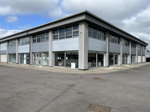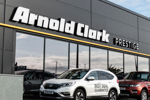Jeff Sacks, of training and consultancy business Jeff Sacks & Associates, said dealers need to have strict ageing policies and the controls in place to ensure these policies are upheld. In America, the top plcs range from 31 days (Group 1) to 43 days (Auto-Nation). Anything above 40-45 days needs questioning.
“Your best gross profit from used cars is those sourced from new car trades,” said Sacks. “Then it’s used car trades, then purchases from auction or trade.”
Purchases from trade are also the greatest risk because they tend to be higher priced, affected by book changes on residuals and offer less gross profit. Sacks believes dealers’ ageing policy on these cars should be lower. He suggested a dealer with a 60-day average age policy should have a 50-day policy on trade/auction purchases. "That will increase your profits,” he added.
Sacks used this example to highlight the differences between plcs and private companies. Plcs, he said, have greater business controls and strong processes, while private dealers are more flexible and able to react more quickly to change. Each could learn from the other, he believes.
“It’s key for the general manager to have a process driven culture,” said Sacks. “The weakness is that they don’t always commit themselves to this.”
However, despite having more focus on process, which helps them to a higher gross profit on average than private dealers (15.45% versus 13.24% in America), plcs have lower net profit (2.26% versus 2.3%). The reason is their higher costs borne by compliancy requirements, stock market listing and staff turnover.
Private dealers could learn by having plc processes in a non-regulatory environment, whereas plcs need to be more flexible and encourage entrepreneurial skills. However, Sacks added: “If I was a plc, I’d go private tomorrow based on this business model.”













Login to comment
Comments
No comments have been made yet.